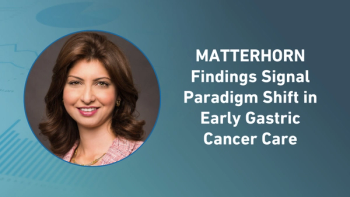
- Applied Clinical Trials-09-01-2013
- Volume 22
- Issue 9
Suicidal Ideation and Behavior: We Can Make a Difference
We can simultaneously establish a database that identifies signals of risk for specific product classes, and also demonstrate products that might in fact reduce risk of suicidal ideation and behavior.
We in the biopharmaceutical and medical device industry are fortunate to have the opportunity to make a difference in patients' lives. We develop products that treat a range of conditions, from life-threatening ones to those that help us remain active and vital as we age, with the goal of improving patients' health. Recently, the FDA has given us the opportunity to make a difference in patients' lives in yet another way. They are asking us to assess and monitor suicidal ideation and behavior in our patients. Why? And, how can we make a difference?
Meta-analyses conducted by FDA (circa 2004-2009) revealed a signal for treatment-emergent suicidal ideation and behavior in studies of products for depression, epilepsy, weight loss, and psychiatric illnesses. Based upon these findings, FDA issued a draft Guidance in 2010, and then a revised draft in 2012, recommending prospective assessment of suicidal ideation and behavior for certain types of products. Specifically, FDA recommends that "prospective suicidal ideation behavior assessments should be carried out in all clinical trials involving any drug being developed for any psychiatric indication, as well as for all antiepileptic drugs and other neurologic drugs with central nervous system (CNS) activity, both inpatient and outpatient," (
Many of us may find this guidance daunting. However, if we stop for a moment and consider these recommendations from FDA, they may not seem so overwhelming. We routinely evaluate adverse events in every single trial for every product. If we think about it this way, it's a matter of working another type of safety assessment into our clinical trial process. This would, thereby, transform this assessment into a routine part of what we do everyday. Yes, this will be work at first.
The practical among us will want to know what effort this assessment will require. The FDA states that there are a number of instruments available for use, including the Columbia-Suicide Severity Rating Scale (C-SSRS). The C-SSRS has already been adapted for patient reported outcomes, and incorporated into trials using existing, proven technology, similar to our widespread use of other types of ePRO. Over 100,000 eC-SSRS assessments have been captured to date. When there is not a signal of suicidal ideation or behavior, these assessments take about three minutes for the patient to complete and require little staff effort.
In May of this year, the Centers for Disease Control and Prevention (CDC) reported that there was a significant increase in suicide for people between ages 35 and 64 from 1999 to 2010, and that in 2010 there were 38,364 deaths from suicide in the United States. We touch thousands of lives every day and have the opportunity (one might say the duty) to help reduce this number by prospectively evaluating suicidal ideation and behavior in every trial, intervening if/when we find a signal of risk in any individual patient. We can simultaneously establish a database that identifies signals of risk for specific product classes, and also demonstrate products that might in fact reduce risk of suicidal ideation and behavior. We can and should make a difference.
Jean Paty, PhD Chief Scientist and Regulatory Advisor, Outcomes, ERT
Articles in this issue
about 12 years ago
Electronic Data Capture in Clinical Trialsabout 12 years ago
Japan Relaxes Clinical Trial Regulations; China Still Strictabout 12 years ago
The Shift to a Centralized Lab Approachabout 12 years ago
Business and People September 2013about 12 years ago
ACT Insert Coverabout 12 years ago
Translational Medicine and Biomarkersabout 12 years ago
FDA, Research Organizations Seek to Bolster Drug Submissionsabout 12 years ago
ACT Coverabout 12 years ago
Streamline and Improve Study Start-Upabout 12 years ago
Right Time, Right ChannelNewsletter
Stay current in clinical research with Applied Clinical Trials, providing expert insights, regulatory updates, and practical strategies for successful clinical trial design and execution.






.png)



.png)



.png)
.png)
